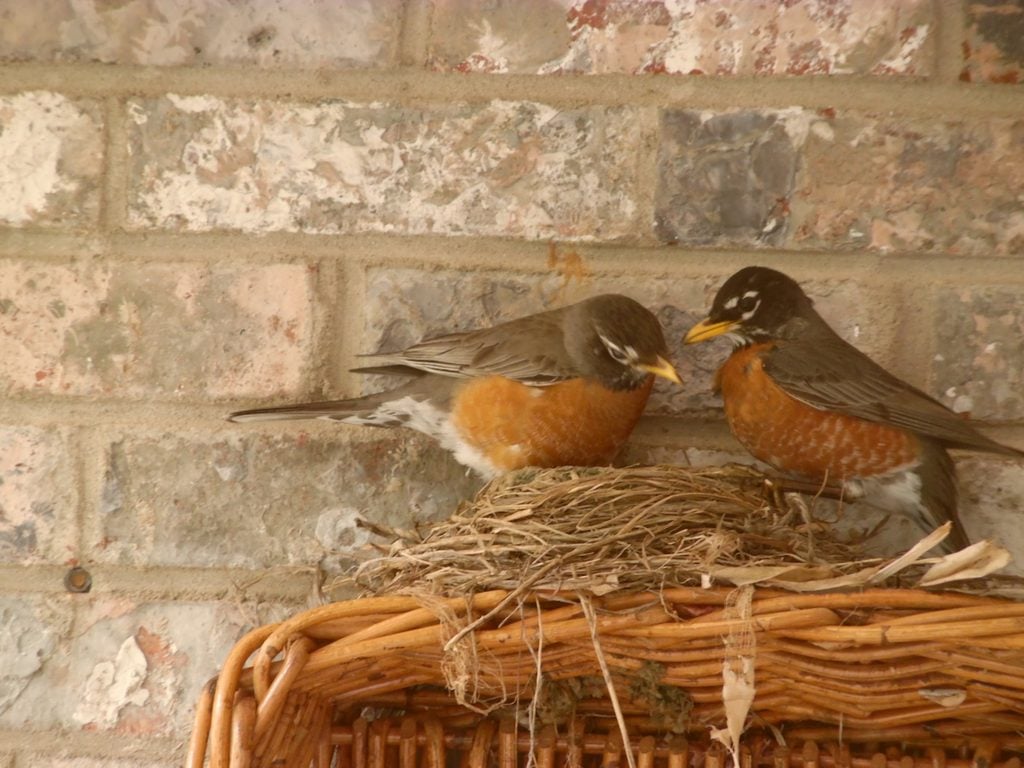Get Ready for Baby Birds: Tips for Bird Nesting Season
Updated: Jun. 30, 2022

Prepare for bird nesting season! Learn the materials birds need to build nests, how to protect nesting birds from predators and the foods nesting birds eat.
There’s something so thrilling about finding a nest with baby birds in your yard. It tells you that you’ve been successful in creating a space where birds feel safe and find the resources they need to raise a family. Plus, it gives you the chance to observe the nesting process from start to finish, and that’s fascinating no matter how many times you see it. Attracting nesting birds isn’t just a matter of luck. There are plenty of things you can do to make your yard more inviting to them. Follow these tips to prepare for bird nesting season.
Provide Lots of Shelter
With very few exceptions, most birds need sheltered locations to nest. Some prefer tree cavities, others build nests on branches or even the ground. Learn about 8 different kinds of bird nests and how to spot them.
Having plenty of trees on your property increases your chances of attracting nesting birds. You can also provide nest boxes for them. You’ll have the most success with nest boxes if you carefully consider the species you’d like to attract and choose boxes made just for them. Here’s how to attract nesting birds to birdhouses.
While some birds reuse nests from year to year, their nesting sites and birdhouses do need to be properly maintained. If you have nest boxes, clean them out in early spring each year to prepare for the new nesting season. Remove any old nest material and check to see if the box had other residents, like mice, during the winter. If so, give the box a good wash with soapy water, rinse it well, and leave it out in the sun to dry.
Help birds prepare for the new nesting season by putting out materials they’ll need to build their nests. Bits of yarn or twine, hair, cotton, straw and other natural materials are ideal. Learn how to make DIY grapevine balls for nesting birds.
Protect Nesting Birds From Predators
Predators are an enormous threat to birds in nesting season. Ensure your yard provides plenty of cover in the form of shrubs, trees, and tall grasses—places where birds can hide. Thorny bushes are especially great cover. Choose nesting boxes without perches, as these make it easier for predators to get into the boxes. Keep cats indoors to protect birds.
Grow Natural Food Sources
Strange as it may seem, some birds are actually less likely to visit your feeders during nesting season. That’s because they need a tremendous amount of protein to stay strong and help their nestlings grow. They generally get that protein from insects. So add plenty of native plants to your yard to attract beneficial bugs, and avoid pesticides whenever possible. While you’re at it, plant natives that provide lots of seeds and berries, and you’ll have a bird buffet that goes way beyond feeders. Learn more about what baby birds eat.
How to Watch Birds in Nesting Season
Once you’ve attracted nesting birds to your yard, of course you’ll want to check out all the action. But it’s important to do this in a way that’s safe for the birds, and legal for you. Try to visit the nests only during the middle of the day, and limit your visits. Your activity can alert predators to the nest’s presence. (Want to feel like a real scientist? Become a bluebird monitor.)
In general, look but don’t touch. Nearly all birds are protected by the International Migratory Birds act, which makes it illegal to disturb or handle active nests. Don’t try to move a nest, even if it’s in an inconvenient spot.
Know When to Help
If the bird is injured, do not attempt to care for it yourself. This is illegal. Contact a licensed wildlife rehab center immediately. Learn what to do if you find an abandoned bird nest or baby bird.
Join NestWatch to Report Nesting Birds
Help scientists learn more about nesting birds and their behavior by signing up for the NestWatch program from the Cornell Lab of Ornithology. Get certified and then monitor and report on nests in your yard or anywhere nearby. The website offers plenty of great resources on birds and their nests, and your data will help monitor the health of bird populations around the globe.
Next, check out super cute photos of baby birds.